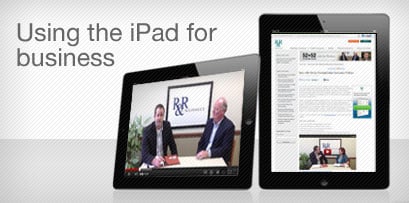To hell with unicorns and rainbows
Are you as sick as I am of hearing that we need to "participate and engage" in social media? I want to get some concrete tips and specific actions to take, not some feel-good social media theories.
If you're an old school, press-the-flesh kind of guy or gal, you don't want to waste a lot of time with ten different social media platforms hoping for leads to land in your lap. You want to take some positive actions that you know will bring you new prospects.
If it feels good, do it
You need online tools that help to supplement your already successful relationship networking efforts. I like to steer relationship networkers towards LinkedIn because it's based on the professional relationships that they have been cultivating for years.
And I have a specific tactic that I like for them to use with LinkedIn. It's worked so well for me as a member of my BNI chapter that I made a video for all my chapter members: How to Use LinkedIn to Get More Referrals in BNI
The premise is simple. On LinkedIn, connect to the people that you know, and then ask them to introduce you to their connections as a way of getting an easy foot in the door with potential prospects. The trick is knowing who to ask your LinkedIn connections to introduce you to.
I see a lot of people who will go to each of their connections' profile pages on LinkedIn to look through their list of connections and pick out the ones who are a good prospect. This is effective, but a big time waster. Instead, I use LinkedIn's search feature to quickly find just the prospects who are a good fit for me.
Concrete tips and specific actions
[Watch the video walk through of this LinkedIn tactic "How to Get Leads with LinkedIn" below]
In my example, I want introductions to local CPA firms here in Las Vegas. So I go to the LinkedIn home page and in the search box (upper right area of the page) I type "CPA" and click the magnifying glass button to run the search.
This generates over 400,000 CPAs in the results. So next I use the filters in the left hand side of the page to narrow down my search results.
The most important filter option to select is "2nd Connections" in the Relationship filter group. The 2nd tier connections are people who are directly connected to one of my direct connections on LinkedIn. A friend of a friend, so to speak. These 2nd tier connections are all people that one of my connections can introduce me to. This cuts my search results down to 1101 CPAs.
Next I'll use some of the other filters to find the 2nd tier connection CPAs who are the best fit as a prospect. So I choose a physical location. I mentioned earlier that I want to find CPA firms in Las Vegas. Because Las Vegas is not one of the choices with a check box in the Locations filter, I'll manually type it into the Locations text field. I now have 180 CPAs in the search results.
Since I want to find CPAs working in accounting firms, rather than CPAs in big companies like the Las Vegas gaming corporations, I check the box for "Accounting" in the Industries filter. That brings me down to 96 CPAs in the search results.
For me to sell my consulting services to a CPA firm, I'm looking for firms with at least 10 employees, but I don't want to pitch very large companies. From the Company Size filter, I check both 11-50 and 51-200 employees. Now I see 30 CPAs in my search results.
Finally, I use the Seniority Level filter to find only owners, directors, CxOs, and partners. That way I'll get the decision makers. In the search results, I see 15 very promising prospects who my LinkedIn connections can introduce me to!
Now this is networking!
We have our short list of ideal prospects, so I look at the first one and see a link that says we have "9 shared connections". That means that I have nine different LinkedIn connections who I can ask to introduce me to this prospect. I click on this link and instantly see the first three of our shared connections.
Below those, I click on the link "View all 9 shared" and a new browser tab opens that shows me a list of all nine of my connections who are also directly connected to this prospect. I can start reaching out to my connections and asking for introductions to this prospect. And I have 14 more CPA prospects to whom I will ask my connections to introduce me!
So old school relationship networkers can use LinkedIn as a tool to help them do their networking more efficiently! The lesson here is that when you're starting out with online marketing, stay within your comfort zone. There's plenty of time for broadening horizons and spreading
About the Author: High Mobley is the founder of 13 Pages Internet Marketing, an online marketing firm and HubSpot partner that helps business owners increase their profitability.

 Are you looking for creative ways to
Are you looking for creative ways to  Mary Planding, owner of
Mary Planding, owner of 
